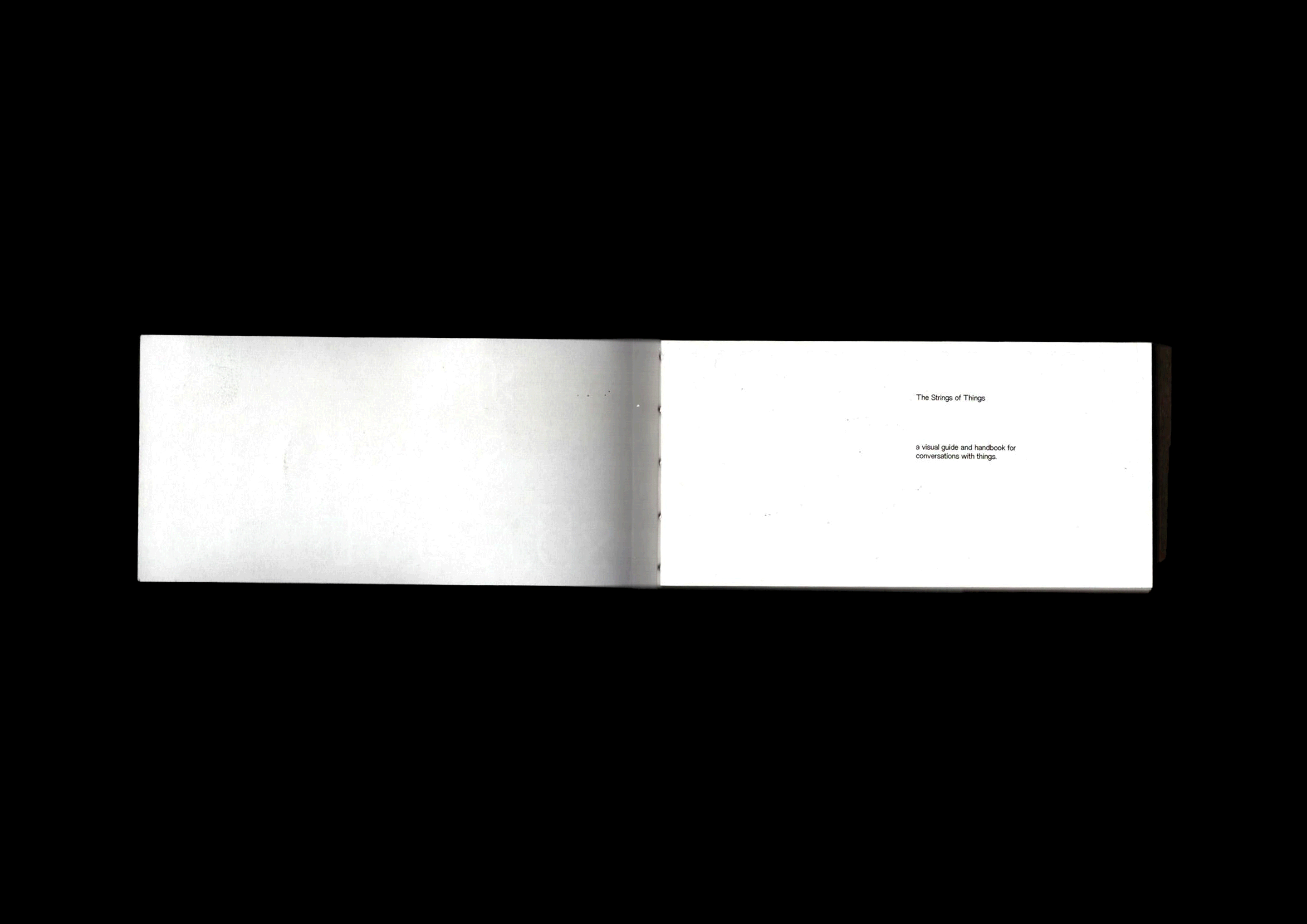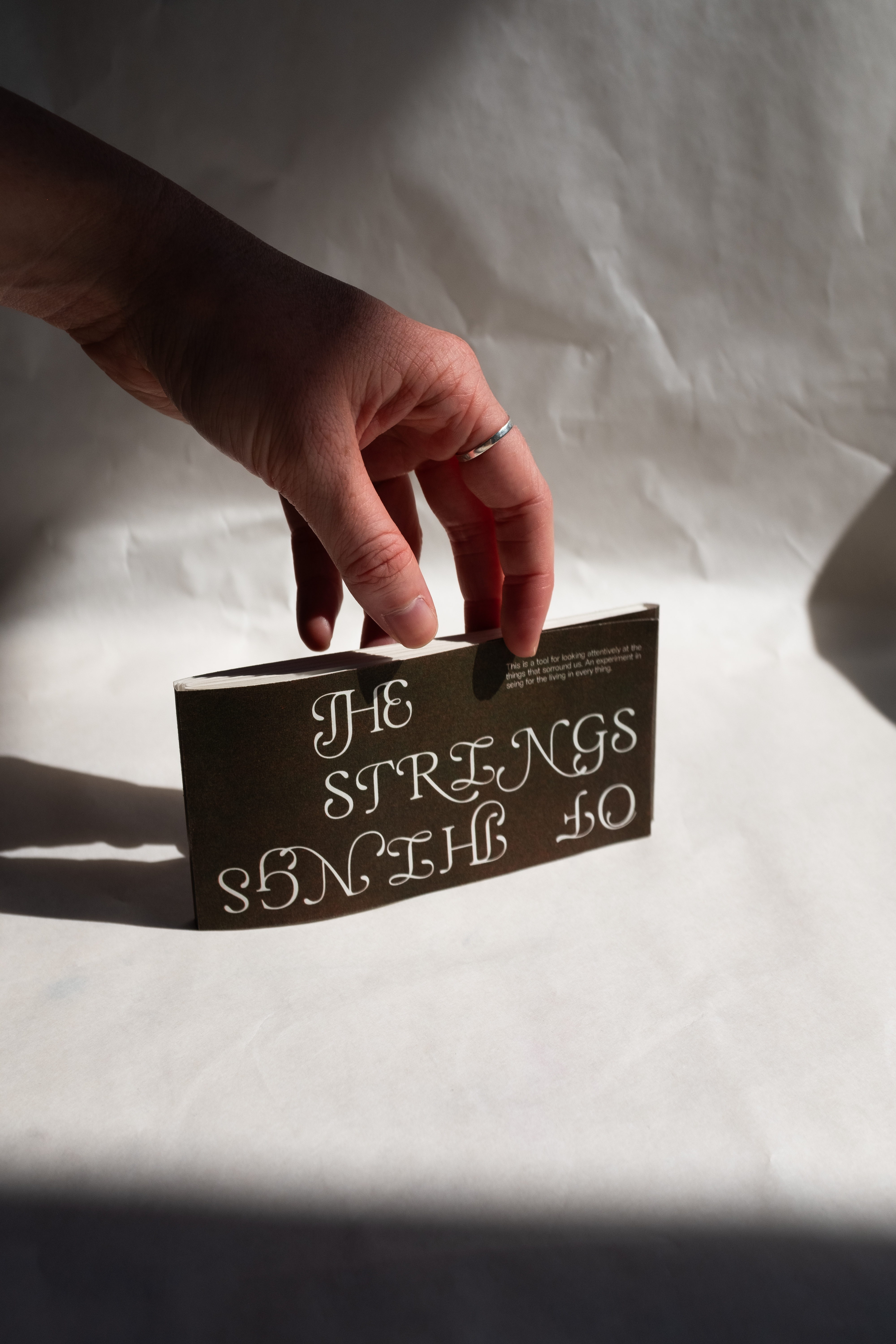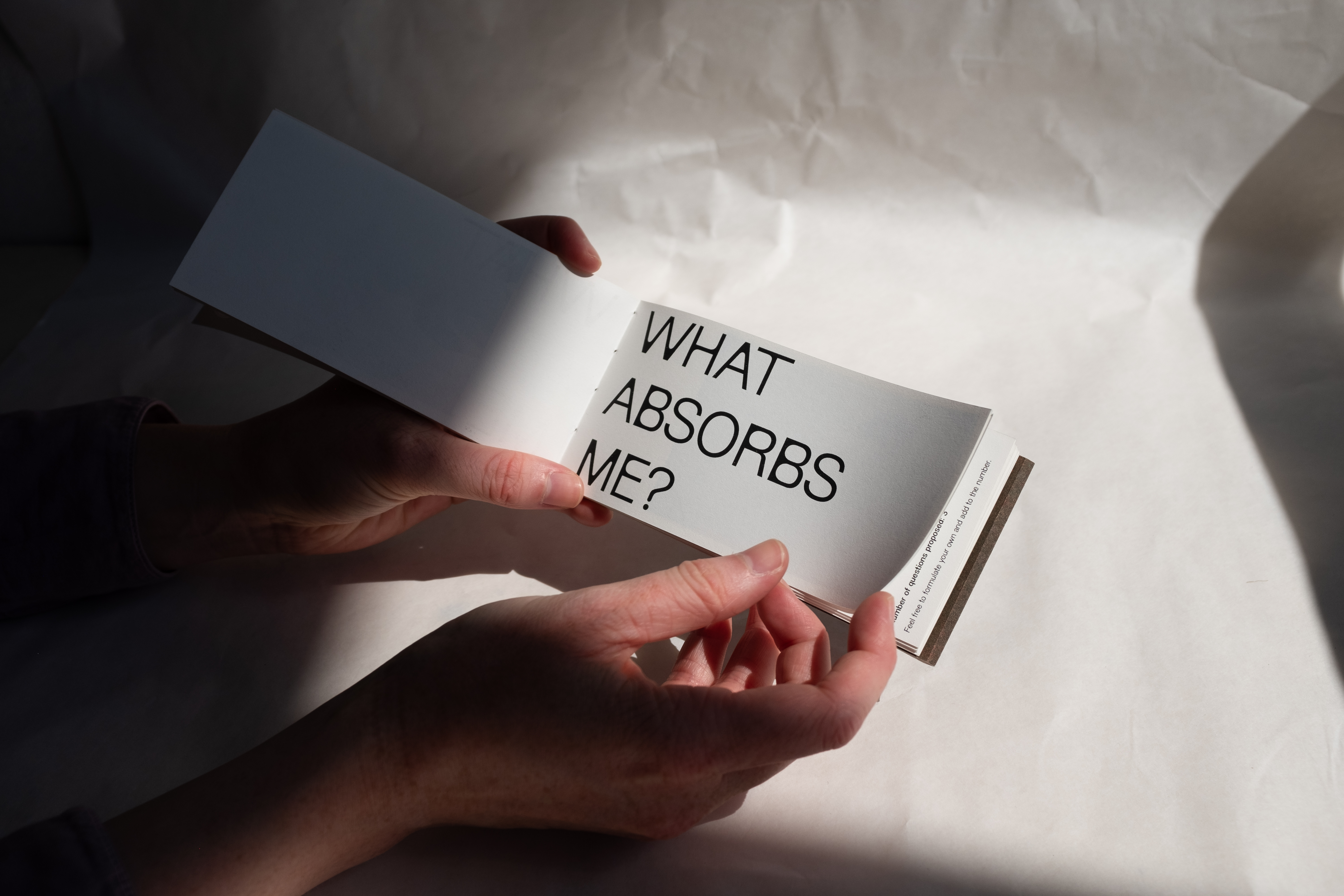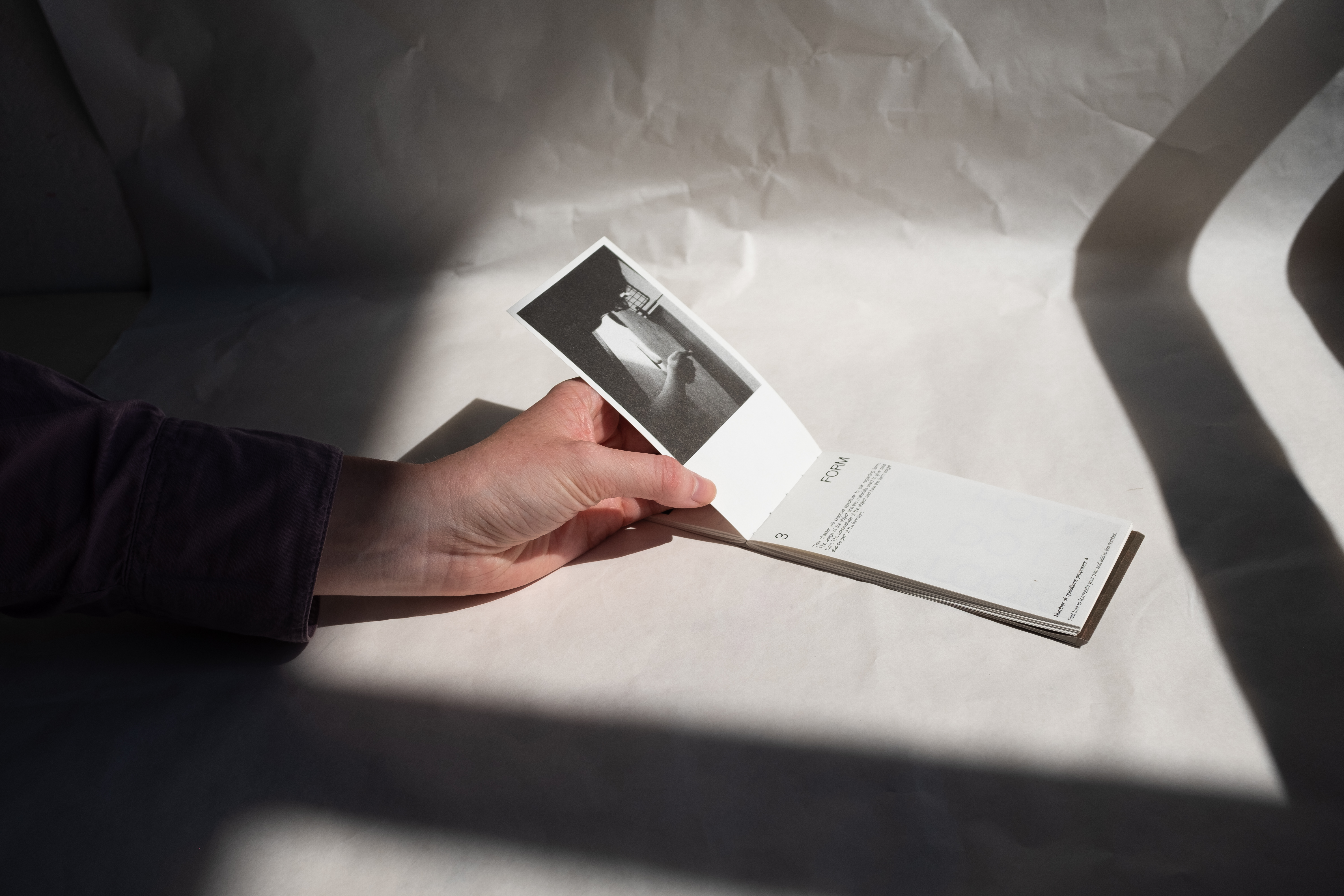Tegneskole (2023) The strings of things (2023) Old Spice Font (2022) Green Spaces (2022) Technopanics (2022) Groninger (2021) AFS (2021) About
Tegneskole (2023) The strings of things (2023) Old Spice Font (2022) Green Spaces (2022) Technopanics (2022) Groninger (2021) AFS (2021) About
(2023)
The Strings of Things
A photographic study in object encounters – asking the speculators to presently and curiously experience the things as a non-human bodies. The questions and photographs are collected in a pocket size book and can be used as a tool for looking at objects with care.
This project explores how we as humans relate and connect to the things around us. It seeks to visualize practices of care around objects and materiality through photography and is an exploration of how photography can convey these material stories in a way that encourages new practices. The project is inspired by philosophies of object/sculptural reading and a feminist approach to theories on materiality.
Excerpt of introduction
(The Living Stone)
Greek lithos = stone and ops = like: danish name: levende sten/living stone. It is small plants, no more than 2-5 cm tall that whne not in bloom, looks so much like small stones that you barely notice them.1
But if you notice them you might see that the small stone you thought you saw has a secret and at times unnoticed life.
A seed is planted in the dry earth, eats from the sun and water and the heat in the air. Sprouts, takes root, blooms. Then you might notice the flower squeezing through the little valley in the little globe. And you might wonder how remarkable a flower can grow from such grey stone. The flower withers with time. The stone is once again a stone and you walk on over the soil wherein it has its home.
The stone cannot be picked up. You cant take it home without digging up roots and re planting it in a pot. And then it needs your care and attention. It needs sun and water and a warm place to stay and ypu cant leave for a month without passing the care to someone else. The stone needs proper care. But next to the stone in soil in your window sill lies another stone. A stone that once was as living as the one in soil. The stone looks like a clam. Its close to opening but massive in and out with only a small hole to reveal that it once was living. You can use it as a flute a friendly hand says after picking it up.
But the dead stone is just as alive as the one that blooms. It once lived in the water – from plankton and algae. Now as an object in your window sill. But if you look at it with the same care in mind as when you water the living stone, you might see it again. See how it lived before in the water, now in your window sill and in a 100 or 100.000 years in another window, under a ball of moss or home again – at the bottom of the sea.
So. If an object were to ask you these questions, what would you say?
1 HaveABC. (2023) https://www.haveabc.dk/42/levende-sten--- lithops












